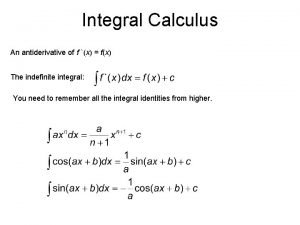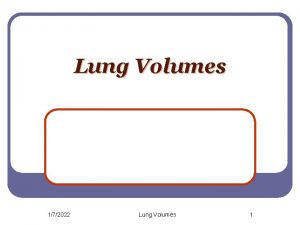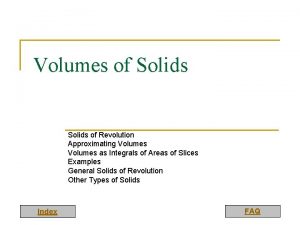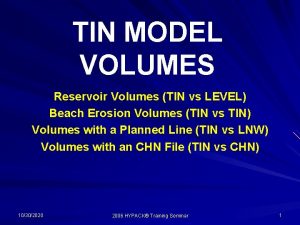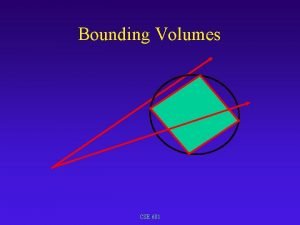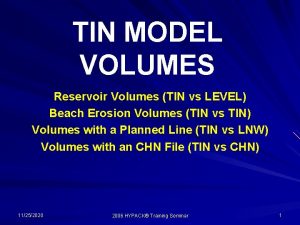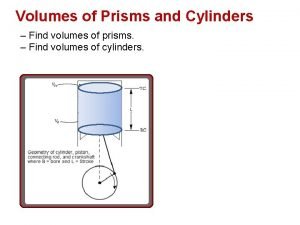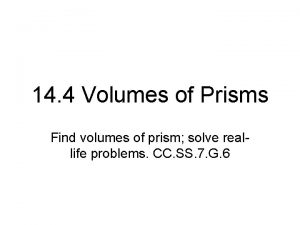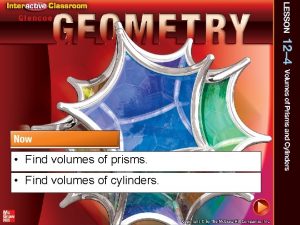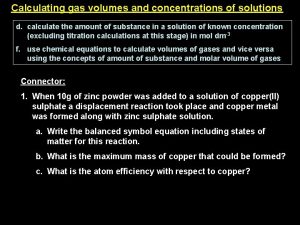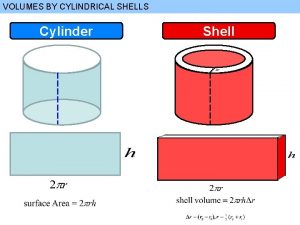Volumes of Revolution LO To calculate the volumes















- Slides: 15

Volumes of Revolution LO: To calculate the volumes of revolution about the x-axis or the y-axis. www. mathssupport. org

Volumes of Revolution A solid of revolution is formed by rotating a plane figure about an axis of revolution First consider a rectangle perpendicular to the x-axis. Imagine rotating the rectangle 360 o about the x-axis. y 0 www. mathssupport. org x

Volumes of Revolution A solid of revolution is formed by rotating a plane figure about an axis of revolution First consider a rectangle perpendicular to the x-axis. Imagine rotating the rectangle 360 o about the x-axis. The solid form is called a disk. y 0 www. mathssupport. org x

Volumes of Revolution A solid of revolution is formed by rotating a plane figure about an axis of revolution First consider a rectangle perpendicular to the x-axis. Imagine rotating the rectangle 360 o about the x-axis. The solid form is called a disk. dx The disk is cylindrical y in shape. Vcylinder. = p r 2 h y 0 x Vdisk = p y 2 dx Vdisk = p (f(x))2 dx www. mathssupport. org

Volumes of Revolution Consider the following solid of revolution formed when the region bounded by f(x) and the x-axis between x = a and x = b is rotated 360 o about the x – axis. www. mathssupport. org

Volumes of Revolution To calculate the volume of the solid we can divide it into slices by making cuts perpendicular to the axis of rotation. If the cuts are reasonably close together then each slice will approximately look like a cylinder. radius = y height = dx y dx We can then find volume of the solid by adding volumes of these small cylinders together. www. mathssupport. org

Volumes of Revolution We know that volume of a cylinder is: V = pr 2 h Hence, volume of the following cylinder with radius y and height dx is: V ≈ p y 2 dx www. mathssupport. org y dx

Volumes of Revolution The total volume of the solid is V, where: V ≈ Sp y 2 dx Therefore, www. mathssupport. org `` Which implies: y dx

Volumes of Revolution The volume V of a solid formed by a curve y = f(x) between x = a and x = b rotated through 2 p radians about the x-axis is given by: www. mathssupport. org

Volumes of Revolution Sketching the graph Drawing a representative rectangle is useful The height of the disk is the width of the representative rectangle: dx The limits of integration are the x-intercepts, -3 and 3 3 -3 dx www. mathssupport. org 3 Use the GDC to evaluate the integral

Volumes of Revolution When the region is rotated 360 o about the x-axis a sphere is formed 3 -3 www. mathssupport. org 3

Volumes of Revolution Find the volume of the solid formed when the region under the curve f(x) = x 2 between x = 0 and x = 5 is rotated 360 o about the x-axis. Give the exact answer. Sketching the graph Rotating the graph 0 www. mathssupport. org 5 The limits of integration are 0 and 5 x cubic units

Volumes of Revolution The volume V of a solid formed by rotating a curve y = f(x) through 2 p radians about the y-axis between y = c and y = d is given by: f(a) = c f(b) = d To use this formula directly you must first express x in terms of y www. mathssupport. org

Volumes of Revolution Find the volume of the solid formed by rotating the line f(x) = 2 x between x = 0 and x = 2 about the y-axis. The interval [0, 2] on the x-axis Corresponds to [0, 4] on the y-axis Sketching the graph Rotating the graph 4 x 0 2 cubic units www. mathssupport. org

Thank you for using resources from For more resources visit our website https: //www. mathssupport. org If you have a special request, drop us an email info@mathssupport. org www. mathssupport. org
 Antiderivative
Antiderivative You should hope that this game will be over soon
You should hope that this game will be over soon Third agricultural revolution
Third agricultural revolution Russian revolution vs french revolution
Russian revolution vs french revolution Lời thề hippocrates
Lời thề hippocrates Vẽ hình chiếu đứng bằng cạnh của vật thể
Vẽ hình chiếu đứng bằng cạnh của vật thể Tư thế worms-breton
Tư thế worms-breton đại từ thay thế
đại từ thay thế Quá trình desamine hóa có thể tạo ra
Quá trình desamine hóa có thể tạo ra Sự nuôi và dạy con của hổ
Sự nuôi và dạy con của hổ Các châu lục và đại dương trên thế giới
Các châu lục và đại dương trên thế giới Các loại đột biến cấu trúc nhiễm sắc thể
Các loại đột biến cấu trúc nhiễm sắc thể Bổ thể
Bổ thể Thế nào là sự mỏi cơ
Thế nào là sự mỏi cơ độ dài liên kết
độ dài liên kết Thiếu nhi thế giới liên hoan
Thiếu nhi thế giới liên hoan
